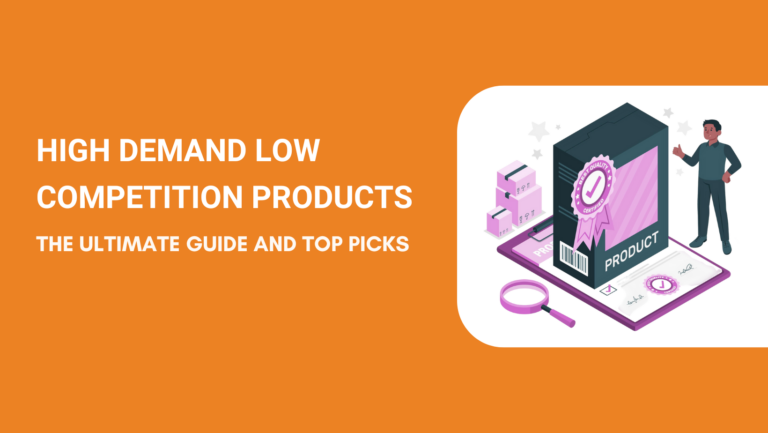In the world of eCommerce, finding a product with strong demand is only half the battle – the real opportunity lies in discovering what people want that not everyone is selling yet.
That’s where high demand, low competition products come in. These are items that buyers are actively searching for, but that haven’t yet saturated the market, giving you a better chance to stand out, convert traffic, and build a sustainable brand.
In this guide, we’ll show you:
- What exactly qualifies as a high demand, low competition product
- The criteria and tools to find them
- And most importantly — 10 trending products in 2025 with growing interest and room for new sellers
Whether you’re launching a new Shopify store, expanding a product line, or exploring dropshipping opportunities, this guide will help you find profitable products with less resistance and more potential.
Let’s get started.
What Is a High Demand Low Competition Product?

A high demand, low competition product is one that many people are actively searching for and buying — but not many sellers are offering. In eCommerce, this sweet spot offers huge potential for profitability: you get consistent traffic without having to battle thousands of competitors.
What Does High Demand Look Like?
High demand means there’s a healthy level of interest in the product, backed by actual data. Here are the common signs:
- High search volume – Many people are looking for the product online via Google, Amazon, or TikTok
- Consistent sales data – Steady purchases across marketplaces like Amazon, Etsy, or Shopify stores
- Growing trends – Rising interest over time shown in tools like Google Trends
What Does Low Competition Mean?

Low competition means few sellers are actively targeting the product, leaving space for new entrants to capture market share. Look for:
- Limited product listings – Not many sellers offering it (especially on major marketplaces)
- Low review count – Products with low reviews often indicate that competition is still emerging
- Weak SEO optimization – Pages that don’t fully target keywords or optimize listings can be easily outranked
When you find the right product that checks both boxes, strong demand and low competition, you unlock a scalable opportunity to build or expand your store
10 High Demand Low Competition Products In 2025
Spotting the right product at the right time is one of the best ways to stand out in eCommerce – especially when you’re entering a space with rising demand but minimal competition. The following list features 10 carefully selected products that are trending in 2025, yet still relatively untapped by most online sellers.
These items come from categories like beauty, wellness, home, and fitness — all backed by growing search interest, low saturation, and strong profit potential.
Here’s a quick overview:
| Product | Category |
| Bakuchiol Serum | Skincare |
| Toe Spacers | Wellness / Foot Care |
| Mushroom Chocolate | Functional Foods |
| Bamboo Pajamas | Eco-Friendly Apparel |
| Niacinamide Body Lotion | Skincare / Body Care |
| Padel Rackets | Sports & Outdoors |
| Ice Roller for Face | Beauty Tools |
| Creatine Gummies | Fitness Supplements |
| Mushroom Coffee | Functional Beverages |
| Rice Water Shampoo | Hair Care / Clean Beauty |
1. Bakuchiol Serum
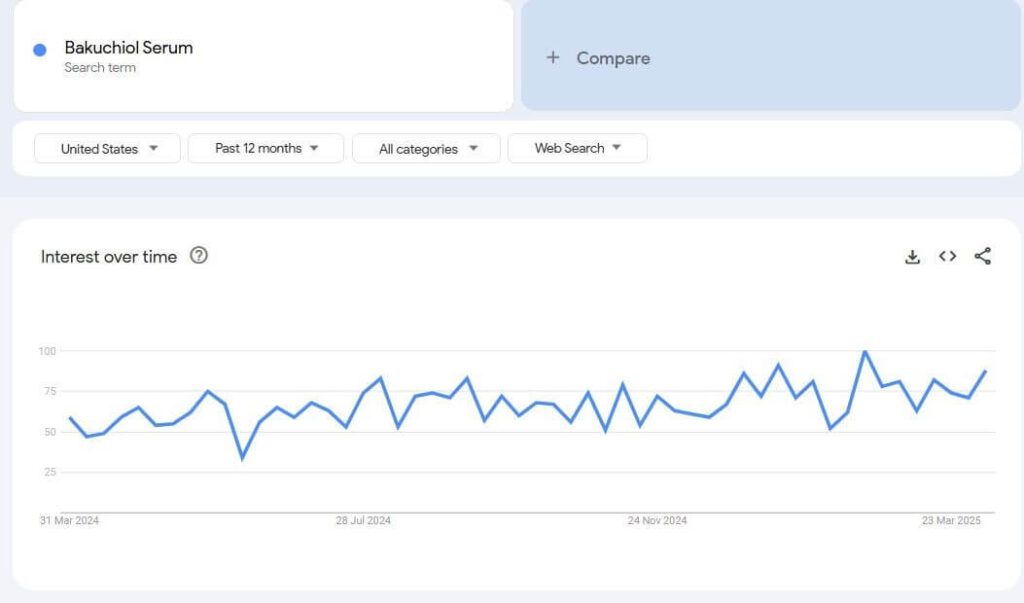
Niche: Beauty & Skincare
Verdict: Best for DTC skincare brands and wellness-focused Shopify stores
Bakuchiol is gaining traction as the gentler, plant-based alternative to retinol, delivering similar anti-aging benefits without the harsh side effects like redness or peeling. Consumers love that it’s vegan, natural, and works for sensitive skin, which fits perfectly with today’s “clean beauty” movement.
Reasons to Sell:
- Growing consumer shift toward non-toxic skincare
- Great for bundling with serums, face oils, or kits
- High profit margins (30–50%) for private label or white-label sellers
Marketing tip: Use terms like “retinol alternative” and “plant-based anti-aging” in your product copy and TikTok/IG Reels to tap into beauty trends and ingredient-conscious buyers.
2. Toe Spacers
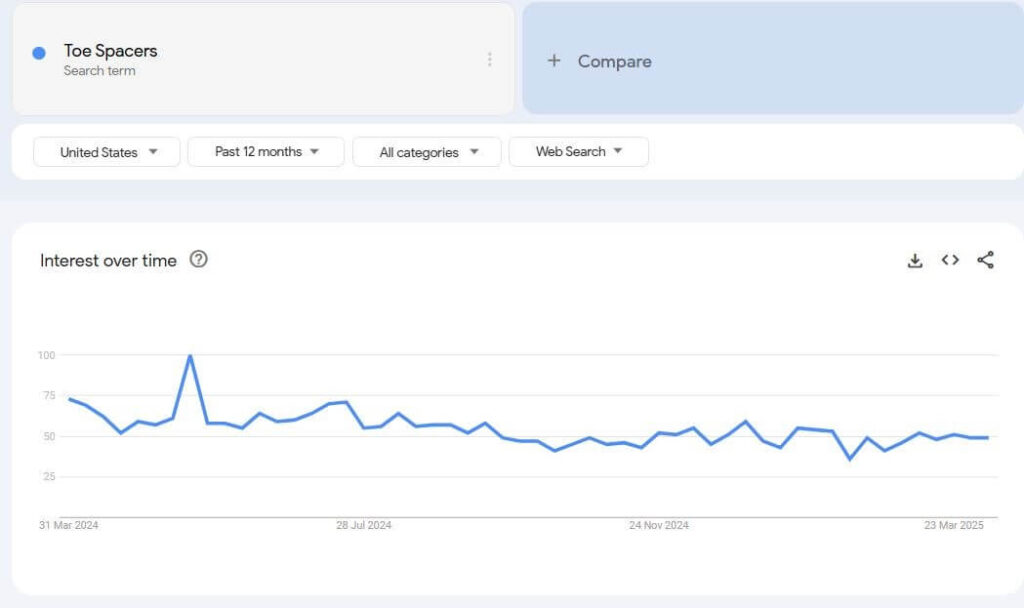
Niche: Wellness & Foot Care
Verdict: Great for Shopify stores and Amazon FBA in the U.S. fitness and recovery space
Toe spacers are trending among runners, gym-goers, and even people working long hours on their feet. They’re used to realign toes, improve posture, and reduce foot pain, making them popular for both recovery and daily wellness.
Reasons to Sell:
- Growing popularity of foot health and barefoot training
- Low product cost and lightweight — perfect for shipping
- Excellent upsell potential with yoga mats, massage tools, or compression socks
Marketing tip: Create short-form content that highlights pain relief and posture correction — especially for people with flat feet, bunions, or plantar fasciitis. Position it as a “daily fix” for tired feet.
3. Mushroom Chocolate
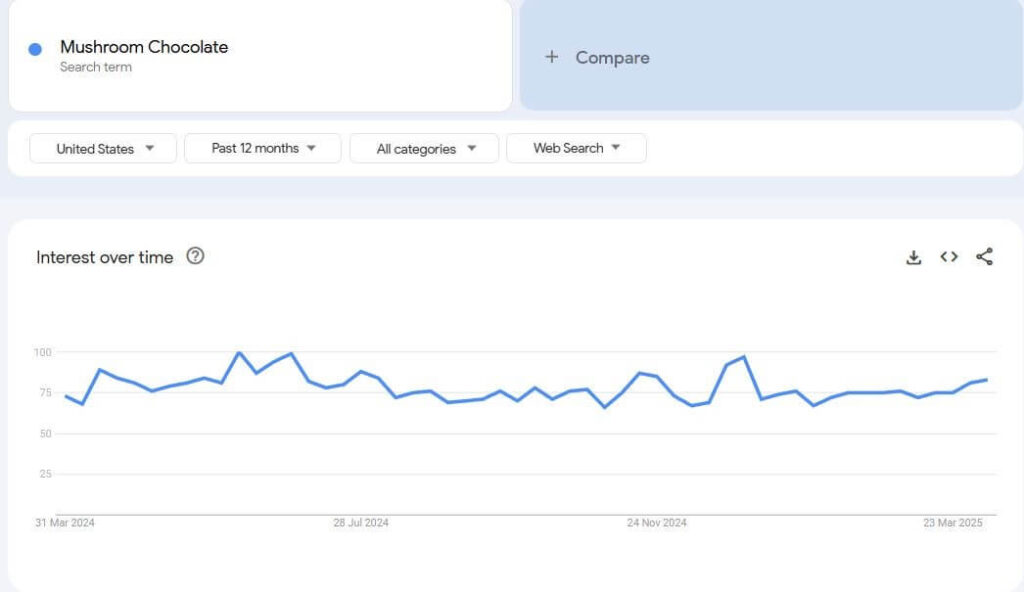
Niche: Functional Foods & Wellness
Verdict: Ideal for DTC health brands or organic snack stores targeting U.S. consumers
Mushroom chocolate combines adaptogens (like lion’s mane, reishi, or chaga) with dark chocolate to create a functional treat that supports focus, mood, and immunity. It’s perfect for health-conscious buyers who want benefits without sacrificing flavor.
Reasons to Sell:
- Taps into the rising trend of functional and mood-boosting foods
- Appeals to both wellness and gourmet snack audiences
- Premium pricing is common — strong margin potential
Marketing tip: Highlight brain-boosting and stress-relieving benefits in your content. Use terms like “clean energy,” “daily clarity,” or “no crash” in ads. This product also performs well with influencer collaborations and UGC-style TikTok videos.
4. Bamboo Pajamas
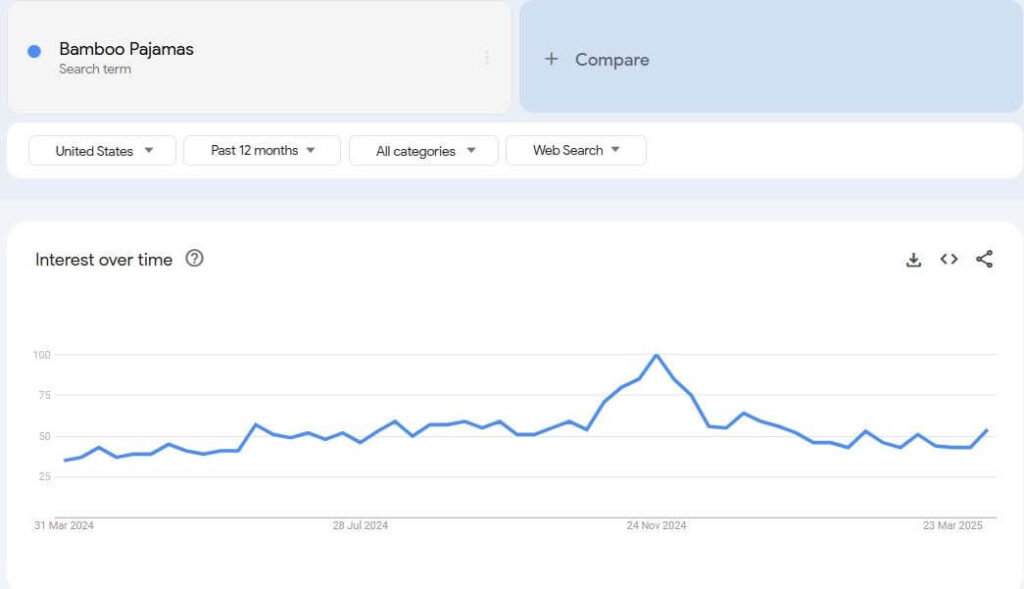
Niche: Sleepwear & Eco-Friendly Fashion
Verdict: Best for U.S.-based DTC brands or boutique Shopify stores targeting wellness-minded shoppers
Bamboo pajamas are soft, breathable, and naturally hypoallergenic – making them a hit with consumers looking for better sleep and sustainable materials. They appeal to people who want to feel good and do good with their purchases.
Reasons to Sell:
- Strong crossover between comfort and sustainability trends
- Great for bundles or upsells (robes, bedding, loungewear)
- Higher perceived value, ideal for branding and storytelling
Marketing tip: Focus on comfort, cooling, and eco-friendliness in your messaging. Use visuals that highlight softness and sleep quality, and appeal to the “treat yourself” mindset for self-care shoppers.
5. Niacinamide Body Lotion

Niche: Skincare & Body Care
Verdict: Best for U.S. skincare brands and private label sellers expanding into full-body routines
Niacinamide long praised for its benefits in facial serums, is now making its way into body lotions.
As you can see how frequently its demand surges as consumers are looking for face-grade ingredients in their body care products. This trend is opening up new territory in an otherwise saturated skincare space.
Reasons to Sell:
- Rising demand for full-body skincare routines
- Familiar ingredient with growing mainstream recognition
- Great for bundling with body scrubs, serums, or wellness kits
Marketing tip: Use terms like “facial-quality body care” or “glow from neck to toe” in your messaging. Target skin care-savvy buyers who already understand niacinamide’s benefits and want to extend them to their entire body.
6. Padel Rackets
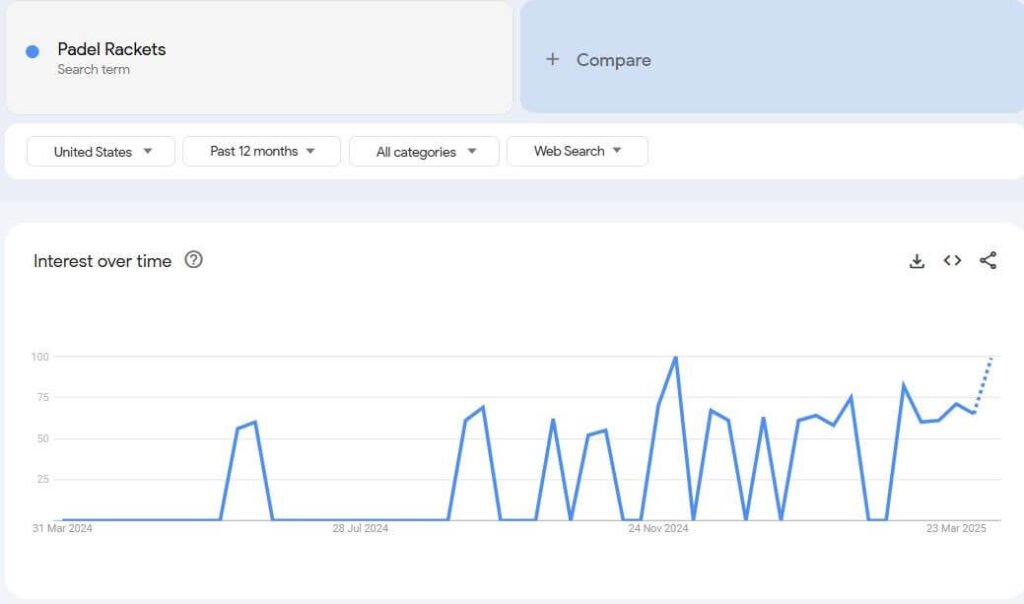
Niche: Sports & Outdoor Recreation
Verdict: Best for U.S. and European sellers targeting emerging sports markets
Padel is one of the fastest-growing racket sports globally, especially in Europe and now making its way into the U.S. With more courts popping up and player interest rising, the demand for beginner-friendly and premium padel rackets is on the rise.
Reasons to Sell:
- 1,800%+ search growth over the past five years (especially in Europe and Latin America)
- Equipment market is still underserved compared to tennis and pickleball
- High AOV (Average Order Value) with potential for branded expansion
Marketing tip: Educate your audience! Use videos to explain what padel is, how it differs from tennis, and why players need dedicated rackets. Offer bundles with balls, grip tape, or bags for added value.
7. Ice Roller for Face
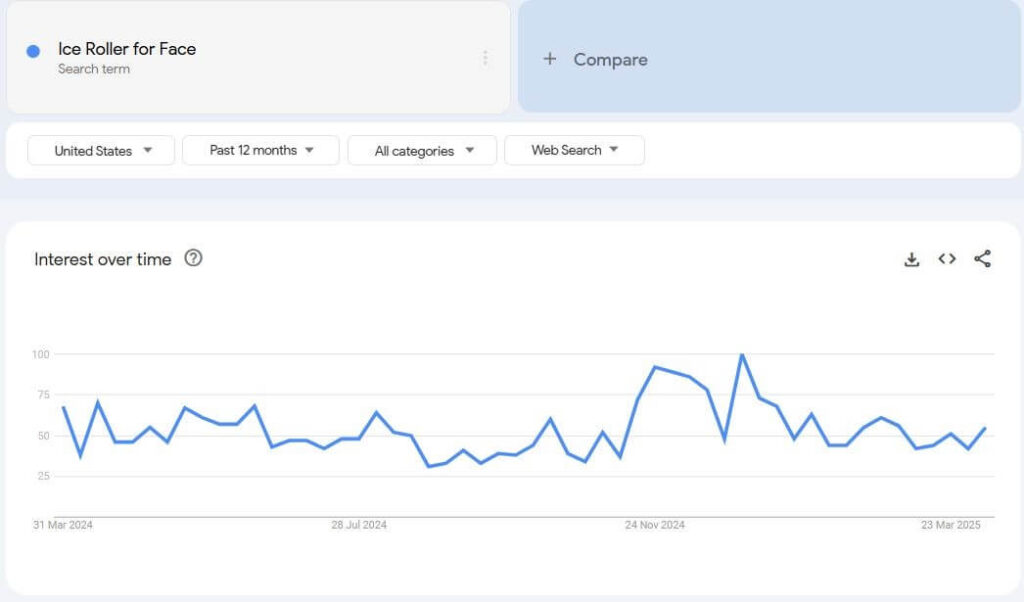
Niche: Skincare & Beauty Tools
Verdict: Great for TikTok-driven beauty stores and self-care ecommerce brands in the U.S.
Ice rollers are taking over skincare routines thanks to viral content showing their benefits for reducing puffiness, calming skin, and giving a morning refresh. They’re reusable, simple, and often bought alongside serums or sheet masks.
Reasons to Sell:
- Strong visibility on TikTok and Instagram with steady U.S. search volume
- Lightweight and low-cost — ideal for bundles or upsells
- Great margins and wide appeal for both skincare newbies and enthusiasts
Marketing tip: Leverage before-and-after visuals in Reels or TikToks to show results after just a few minutes of use. Position as part of a calming, de-puffing morning routine. Works great with keywords like “ice facial” or “wake-up skincare.”
8. Creatine Gummies
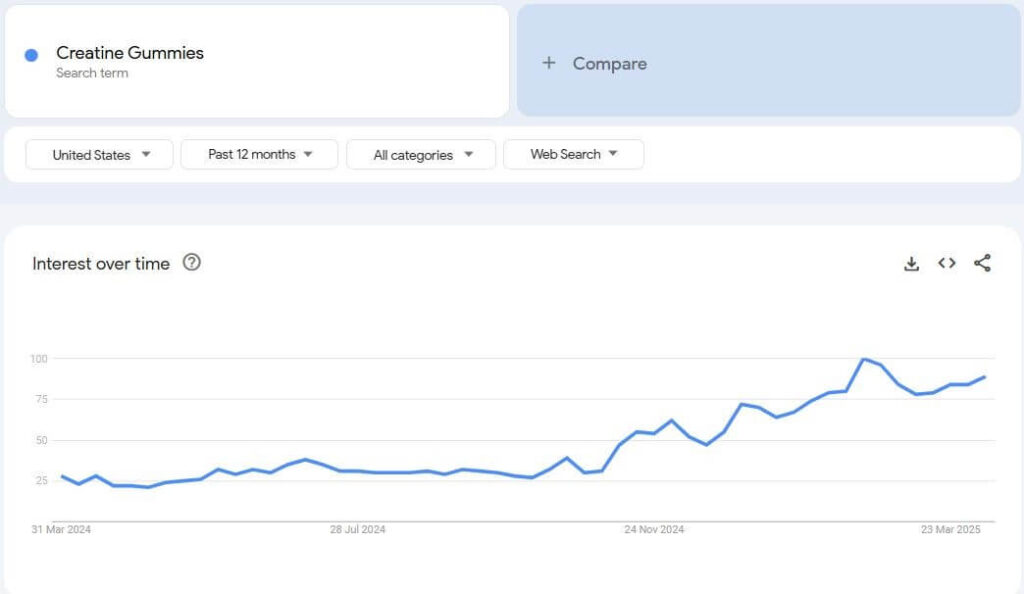
Niche: Fitness & Supplements
Verdict: Ideal for fitness-focused brands, especially those offering private label or DTC health products
Creatine is one of the most researched and widely used fitness supplements, and now it’s getting a makeover. Gummies offer a tastier, more convenient alternative to powders, appealing to both gym beginners and casual wellness consumers.
Reasons to Sell:
- Riding the wave of gummy-format supplements
- Perfect for pre-workout or recovery bundles
- Still early in adoption — few big players dominate this space
Note: If you’re in the fitness or wellness niche, this is a growing opportunity. However, supplement products come with extra regulations and responsibilities — so make sure you’re aware of labeling, sourcing, and compliance before diving in.
Marketing tip: Highlight convenience and flavor. Position creatine gummies as “no scoop, no mess” – great for new lifters, busy professionals, or anyone who hates chalky shakes.
9. Mushroom Coffee
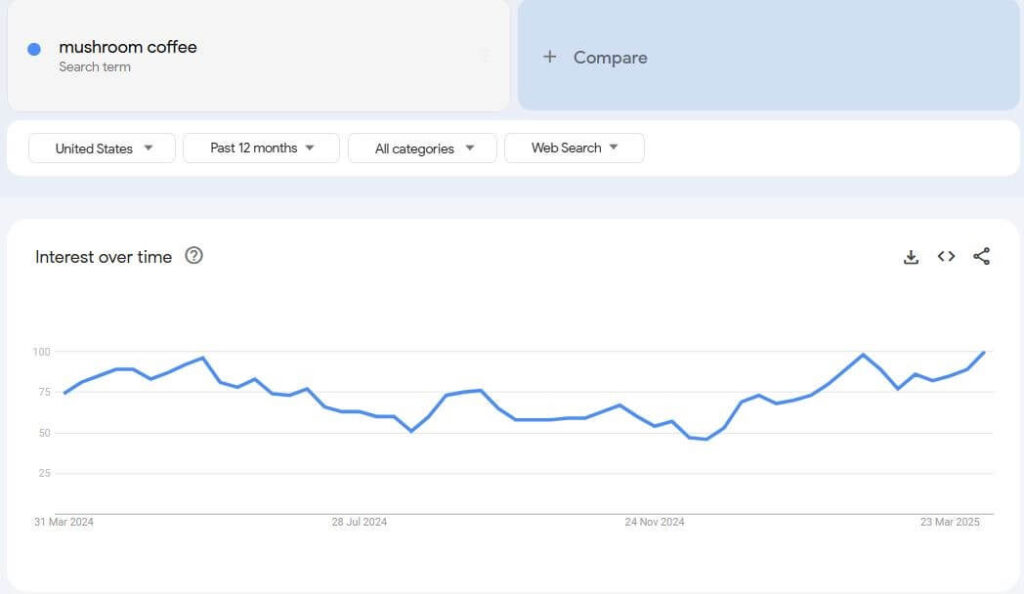
Niche: Functional Beverages & Wellness
Verdict: Great for U.S. health brands targeting productivity, energy, and focus-conscious consumers
Mushroom coffee blends functional mushrooms like lion’s mane or chaga with regular coffee to deliver smoother energy and cognitive benefits — without the crash. It’s a favorite among wellness lovers, remote workers, and biohackers.
Reasons to Sell:
- Appeals to both coffee lovers and wellness-focused shoppers
- Popular on TikTok and Reddit for boosting focus and productivity
- Premium product = higher margins, especially for branded DTC plays
Marketing tip: Use messaging like “Energy without the crash” or “Focus-enhancing coffee” in your content. Educational UGC or short-form videos explaining the benefits of adaptogens work great here – especially when targeting people trying to cut back on regular caffeine.
10. Rice Water Shampoo
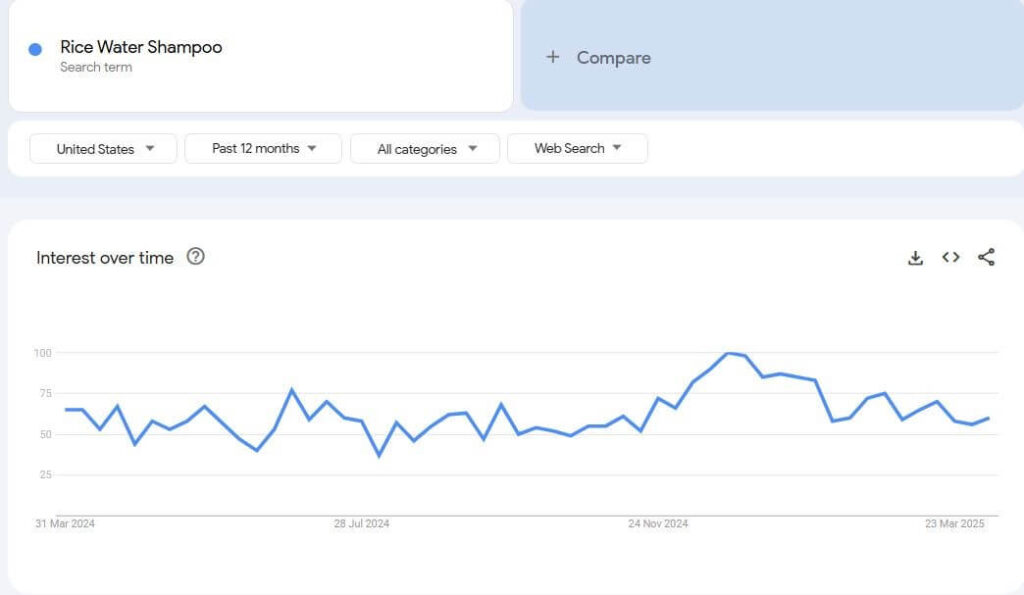
Niche: Hair Care & Natural Beauty
Verdict: Perfect for natural hair brands, private label sellers, and organic beauty stores
Rice water has long been used as a DIY hair treatment, especially in Asian beauty traditions. Now it’s making its way into bottled shampoos — offering consumers a natural way to strengthen, grow, and smooth their hair without synthetic chemicals.
Reasons to Sell:
- Taps into clean beauty and ancient remedies
- Popular on TikTok and YouTube as a DIY trend — now transitioning into packaged products
- Great for bundling with conditioners, hair oils, or scalp massagers
Marketing tip: Use before-and-after visuals to show hair growth and smoothness. Keywords like “natural hair growth,” “strengthen hair,” and “no sulfate shampoo” perform well with this product. UGC with long-hair creators or curly hair influencers works especially well here.
Criteria for Selecting High Demand Low Competition Products
To find high demand, low competition products, you’ll need to follow a few key criteria, starting with:
1. Market Demand

As mentioned earlier, the goal is to identify products that people are actively searching for but aren’t widely available yet. This gap is where the opportunity lies.
You can measure demand using tools like Google Keyword Planner and Google Trends, which show search volume and rising interest in specific terms, for example, the growing popularity of “non-alcoholic beverages.”
Social media platforms like TikTok, Instagram, and Facebook are also valuable for spotting early trends. Hashtags, influencer posts, and viral content can give you real-time insight into what’s gaining traction before it becomes saturated.
Sales data is another key indicator. The Amazon Best Sellers list is a great place to start. Items like the Stanley Quencher, which has surged in the Home & Kitchen category, offer real-world proof of what’s currently performing well.
2. Competition Analysis
Finding high demand, low competition products isn’t just about spotting trends, it’s also about understanding the competitive landscape. A solid competition analysis helps you evaluate whether there’s room for your product to succeed.
Start by reviewing competitor stores. Analyze their product listings, pricing strategies, customer reviews, and overall presentation. Pay special attention to their bestsellers and how often they add new products – this can give you a sense of how quickly the niche is evolving.
You can also use tools like Jungle Scout, Zik Analytics, or Sell The Trend to uncover key insights like:
- Estimated sales volumes
- Average pricing
- Review counts and customer feedback
- Market saturation indicators
The goal is to spot underserved opportunities – products that people are clearly buying but aren’t yet overwhelmed by sellers.
Tips for Finding Underserved Niches
- Customer Reviews: Check reviews on competitor products to find common complaints. These can be opportunities for improvement in your product.
- Social Media: Follow forums, groups, and social media pages related to your niche to spot unmet needs.
- Niche Score: Use tools that provide a niche score based on demand and competition. For example, Jungle Scout recommends a niche score of 7 or higher.
- Seasonality: Avoid highly seasonal products unless you’re prepared for fluctuating sales. Set seasonality to low to find more stable products.
3. Profit Margins
Profit margins are one of the most important factors in evaluating a product’s viability. A product might have strong demand and low competition – but if the profit margin is thin, it might not be worth selling.
To determine whether a product is profitable, you need to calculate how much money you make after covering all related costs.
Here’s a simple formula:
Profit Margin (%) = [(Selling Price – Cost of Goods Sold) / Selling Price] × 100
Example:
- Selling Price: $50
- Cost of Goods Sold (COGS): $30
- Profit Margin = [(50 – 30) / 50] × 100 = 40%
Make sure to factor in all expenses, not just the cost of the product. This includes:
- Product sourcing or manufacturing
- Packaging
- Shipping fees (including international or last-mile delivery)
- Transaction fees (Shopify, PayPal, etc.)
- Marketing and ad spend
- Fulfillment and storage costs (if applicable)
Choosing products with healthy margins ensures your business stays profitable, especially after ad costs and other overheads are factored in.
4. Keyword Search Volume

Understanding keyword search volume helps you gauge product demand and competition.
Tools for Keyword Search Volume
- Google Keyword Planner: This tool is free and accurate. It shows the monthly search volume for your chosen keywords. This can help you identify popular products.
- Ahrefs: Ideal for finding low-competition keywords. It provides search volume data and keyword difficulty scores.
- SEMrush: Offers detailed insights. It includes search volume, keyword trends, and competitive analysis.
Search Volume Ranges
| Search Volume | Demand Level |
| 100 – 1,000 | Low |
| 1,000 – 10,000 | Moderate |
| 10,000+ | High |
Keep in mind, a high search volume might also mean high competition. Aim for keywords with moderate search volume and low competition.
Tips on Keyword Search
- Enter your product idea into Google Keyword Planner.
- Review the search volume and note the trends.
- Cross-check with Ahrefs or SEMrush for competition levels.
Example:
- If you find a keyword with 5,000 searches per month and low competition, it’s a good candidate.
- Add related keywords to your list and check their volumes too.
5. Unique Selling Proposition (USP)
To stand out in a crowded market, you need a Unique Selling Proposition (USP). A USP highlights what makes your product different and better than competitors. It tells customers why they should choose your product.
A strong USP addresses your product’s unique quality, feature, or value. For example, if you offer eco-friendly packaging, make this part of your USP.
Therefore, a strong USP is important because of the following
- Differentiation: Sets your product apart from others.
- Value Communication: Shows the unique benefits to customers.
- Customer Loyalty: Builds trust and loyalty among shoppers.
Elements of an Effective USP
- Clarity: Be clear about what makes your product different.
- Relevance: Ensure it meets your customers’ needs.
- Uniqueness: The feature or quality should be exclusive to your product.
Examples of Strong USPs
- Dollar Shave Club: “A great shave for a few bucks a month. No commitment.” This USP highlights affordability and convenience.
- Toms: “With every product you purchase, Toms will help a person in need.” Emphasizes social impact and charity.
How to Develop Your USP
- Analyze Competitors: Identify what they offer and find gaps.
- Understand Your Audience: Know their needs and preferences.
- Highlight Benefits: Focus on what makes your product special.
A compelling USP improves your marketing and sales efforts by making your product memorable. Communicate your USP across all channels, from your website to your social media.
6. Product Size and Weight

Size and weight are crucial factors when choosing products to sell. These factors impact shipping costs and logistics.
Smaller, lighter products are cheaper to ship and handle. Heavy and bulky items often lead to higher shipping costs.
These costs can eat into your profit margins. For beginners, starting with small and lightweight products is a wise choice.
Here are some examples of products that fit this category:
- Face masks
- Nail polish
- Yoga mats
- Water bottles
These items are easy to store, pack, and ship. This simplicity can save you time and money on logistics.
According to Jungle Scout, small and lightweight products are ideal for new sellers. They recommend products that are less than 18 inches on any side and weigh less than 5 pounds.
Additionally, focusing on these smaller items reduces the risk of damage during shipping. This can lead to fewer returns and higher customer satisfaction.
Large and heavy items, on the other hand, may require special handling, which can complicate your logistics. They might need palletized shipping or freight services, adding more costs and steps to your process.
7. Regulatory Requirements
When choosing high demand low competition products, you need to understand regulatory requirements. Different products have different rules. Safety standards and import restrictions are common examples.
Safety standards protect consumers. For example, children’s toys must follow guidelines set by the CPSC. Testing for toxic chemicals and choking hazards is required.
Import restrictions are also important. Some items can’t be brought into your country without extra steps. Check U.S. Customs and Border Protection for detailed rules on importing goods.
Tips for Ensuring Compliance
- Research: Visit official sites like the FDA and EPA.
- Certification: Look for necessary certifications like CE marking in Europe.
- Documentation: Keep records of compliance tests and approvals.
Examples of Regulated Products
- Electronics: Must meet FCC standards.
- Cosmetics: Should comply with FDA regulations on ingredients.
- Food items: Need safety checks from agencies like USDA.
Ensuring regulatory compliance helps you avoid fines and protect your customers. Always stay updated with the latest rules by checking government websites regularly. This practice will help you maintain a reliable and safe business.
8. Trends and Seasonality
You should keep an eye on market trends to spot rising product categories. Tools like Google Trends can help you analyze search interest over time.
For example, non-alcoholic beverages have seen a significant rise recently, with sales increasing by 598% during the 2023 Cyber holiday shopping weekend.
Use market research tools to check the demand score and competition data. This will help you identify products with growing interest but low competition. For example, yoga mats and fitness items are currently in high demand.
Seasonality is also crucial in eCommerce. Products like winter coats or holiday decorations sell best during specific times of the year.
Use filters in product research tools to set seasonality to “Very Low.” This ensures you are looking for products that sell consistently throughout the year.
Here’s a simple breakdown of how to identify seasonal vs. evergreen products:
| Type | Characteristics | Examples |
| Seasonal | High demand during specific times of the year | Christmas decorations, Halloween costumes |
| Evergreen | Consistent demand year-round | Water bottles, fitness equipment |
Tips for Evaluating Seasonality
- Check Monthly Sales Data: Look at monthly sales data to see if sales fluctuate significantly throughout the year.
- Review Search Trends: Use tools to analyze search trends over the past 12 months.
- Analyze Competitor Inventory: If competitors frequently run out of stock during peak seasons, it’s a good sign of seasonal demand.
Tools and Methods for Identifying High Demand Low Competition Products
Finding the right product starts with the right research. Below are proven tools and methods to help you discover what’s trending – before the competition catches on.
Google Trends
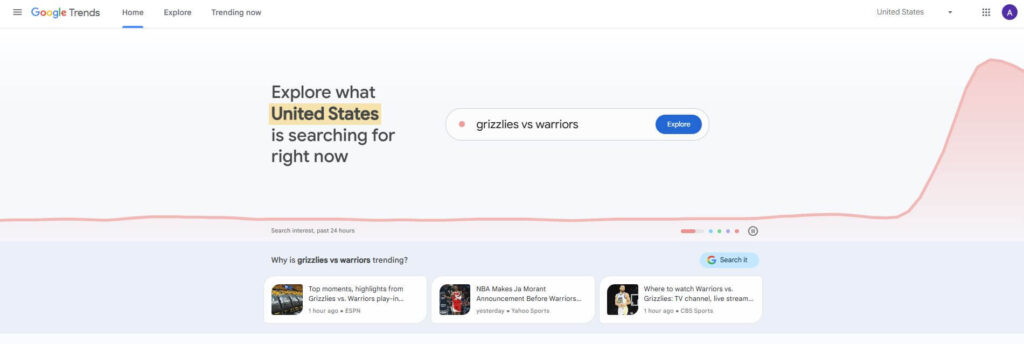
Google Trends is a powerful tool that can help you find high demand, low competition products. Using it, you can see how often specific keywords are searched for in various regions and during certain periods.
Here’s how you can leverage this tool:
- Go to Google Trends.
- Enter a keyword. For example, type “wireless headphones.”
- Look at the interest over time. This shows the keyword’s popularity.
You can use the Interest Over Time graph to see if a product is gaining or losing popularity. A steady or rising trend indicates potential high demand. A declining trend might suggest a decreasing interest.
Google Trends also shows seasonal variations. For example, searches for “swimming pool floats” might spike in summer. Identifying these seasonal trends can help you plan your inventory better.
You can compare up to five terms at once. This helps you see which products are trending more. For example, compare “wireless headphones” and “Bluetooth speakers” to see which has higher demand.
| Feature | Usage |
| Interest Over Time | Check overall keyword popularity |
| Regional Interest | See where searches are popular |
| Related Queries | Discover related high demand products |
Product Research Tools
Finding high-demand, low-competition products on Amazon can be easier with the right tools. Tools like Jungle Scout, Helium 10, and AMZScout offer various features to help you identify them.

Jungle Scout
Jungle Scout offers a comprehensive platform. Their Product Database lets you filter by category, price, and demand to find profitable items. They also have an Opportunity Finder to help you spot low-competition niches.
Helium 10
Helium 10 provides several research tools. Xray, part of their Chrome extension, analyzes over 450 million products. It shows metrics like estimated monthly sales and Best Sellers Rank (BSR). This data helps you evaluate product viability quickly.
AMZScout
AMZScout gives in-depth insights into sales trends and competition. Their platform features tools for keyword research and competitor analysis. This helps you understand market needs and find gaps where you can succeed.
Benefits of These Tools
- Identify Niche Opportunities: By showing high demand and low competition metrics, these tools help you spot lucrative niches.
- Competition Analysis: They provide data on competitors’ pricing strategies, sales volumes, and customer reviews.
- Estimate Demand: Sales estimators show how many units a product sells each month, helping you gauge market demand.
Social platforms are goldmines for spotting product trends in real time. Here’s how to tap into them:
- Use hashtags to track trends: Search hashtags like #trendingnow, #musthave, or niche-specific tags to see what’s gaining traction.
- Follow influencers in your niche: Influencers often feature emerging products in their content. Watching what they promote can give you an edge on what’s about to go mainstream.
- Leverage social listening tools: Platforms like Hootsuite, Sprout Social, and BuzzSumo allow you to monitor mentions, hashtags, and keywords across social media. Use these to identify products that are getting consistent engagement.
- Instagram: Check the Explore page, trending posts, and high-engagement accounts in your niche. Comments and likes offer quick insight into real interest.
- Facebook Groups: Join relevant groups and observe conversations. These communities often share product ideas, pain points, and recommendations.
- Pinterest: A visual search engine perfect for trend discovery. Look at saves and repins on niche boards to spot rising products.
- TikTok: Use the For You page and search keywords like “TikTok made me buy it.” Watch out for unboxings, reviews, and viral product demos.
- Google Trends: A must-have for validating whether a product is gaining interest over time, or just a short-term spike.
Trade Shows and Industry Events
Attending trade shows and industry events is crucial for discovering high demand, low competition products. These events gather industry professionals, showcasing new trends and innovative products.
Trade shows provide a unique opportunity to see products firsthand. You can evaluate their quality, compare them with competitors, and understand market trends.
Meeting suppliers face-to-face can also help you negotiate better deals and establish lasting relationships.
Tips for Effective Networking
- Prepare in Advance: Research exhibitors and plan your visits.
- Attend Seminars: Gain insights from industry experts and stay updated on trends.
- Network Actively: Engage in conversations, exchange contacts, and follow up.
Walking the trade show floor lets you observe what’s generating buzz. Note which booths attract the most attention and engage in discussions to understand why. Use this intelligence to identify products with high demand but low competition.
To find relevant events, utilize online directories. Websites like Trade Show Buzz list top manufacturing shows while Classic Exhibits covers a variety of industries.
How to Source High Demand Low Competition Products to Sell Online
Once you’ve identified a promising product, the next step is making sure you can source it reliably – with good quality, low cost, and consistent supply.
Here are your main sourcing options:
1. Use a China Sourcing Agent
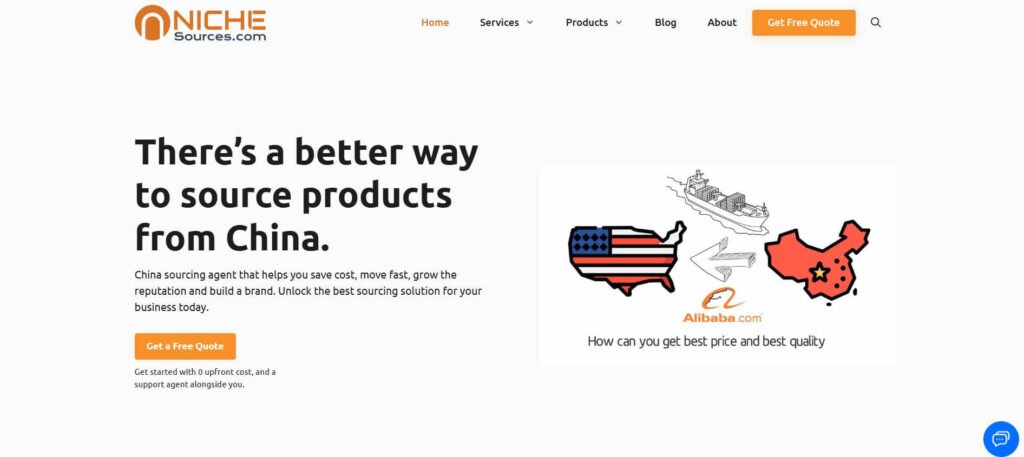
Working with a sourcing agent is one of the easiest ways to find vetted suppliers for trending products. Agents like NicheSources help you:
- Connect with reliable factories
- Negotiate better prices
- Customize packaging or branding
- Handle quality control and shipping logistics
This option is ideal if you’re serious about building a brand or need help navigating the sourcing process from end to end.
2. Source from Alibaba or 1688
If you’re comfortable sourcing directly, you can use platforms like:
- Alibaba: Global supplier marketplace with tons of product options and MOQs
- 1688.com: A China-based wholesale site with lower prices but more language and logistics barriers (usually requires a sourcing agent to navigate)
Tip: Look for suppliers with good reviews, verified badges, and clear responses to customization or sampling requests.
3. Use Dropshipping Platforms
If you’re just testing a product or want to start without holding inventory:
- Try platforms like AliExpress, CJdropshipping, or Zendrop
- Focus on suppliers with fast shipping times and good feedback
- Use tools like Dropship.io to validate performance before scaling
Frequently Asked Questions
Understanding high-demand, low-competition products can help your eCommerce business thrive. Below are answers to some common questions about these products.
What Products Are in High Demand Right Now?
Product popularity and trends can vary from day to day. However, here are some of the most high-demand products at this point:
- Fitness equipment
- Biodegradable phone cases
- Reusable straws
- Ergonomic office chairs
- Smart pet feeders
- Security cameras
- Organic skincare products
- Beauty tools
- Portable solar chargers
- Muscle massage guns
What Is the Most Purchased Item in the World?
The most purchased item in the world is clothing and footwear.
According to Statista, the global apparel market was valued at approximately $1.73 trillion in 2023 and is projected to reach around $2 trillion by 2028.
This category consistently ranks highest in global consumer spending due to its essential nature and frequent need for replacement.
What Is the Easiest Product to Sell?
The easiest product to sell is one that meets the following criteria:
- High Demand: Products like phone accessories, fitness equipment, and beauty products are consistently in high demand.
- Low Competition: Items in emerging niches or with unique features that set them apart from competitors tend to sell more easily.
- Low Cost: Products that are inexpensive to produce or source, such as digital products (e.g., eBooks, courses) or lightweight physical goods, are easier to sell due to higher profit margins.
- Easy to Ship: Small, lightweight items like phone cases, jewelry, and accessories reduce shipping costs and complexities.
- Simple to Use: Products that do not require extensive instructions or setup, such as kitchen gadgets or fashion accessories, tend to have lower return rates and higher customer satisfaction.
Among these, phone accessories (like cases, chargers, and screen protectors) are often cited as some of the easiest products to sell. They have high demand, are relatively low cost, easy to ship, and appeal to a broad audience.
How to Source High Demand, Low Competition Products to Sell Online?
Sourcing high-demand, low-competition products involves strategic research and reliable partnerships. Here’s a concise guide:
- Market Research: Use tools like Google Trends and Amazon Best Sellers to identify trending products with low competition.
- Keyword Research: Utilize SEO tools such as Ahrefs and SEMrush to find high-volume, low-competition keywords.
- Competitor Analysis: Analyze competitors’ offerings and customer reviews to identify market gaps.
- Supplier Sourcing: Explore platforms like Alibaba and Global Sources, and attend trade shows to find reliable suppliers.
- Product Validation: Order samples, test small batches, and gather feedback to validate product quality and demand.
- Negotiation: Negotiate prices and minimum order quantities (MOQ) to ensure favorable terms.
- Logistics: Use reputable freight forwarders for efficient shipping and customs clearance.
For a streamlined sourcing experience, consider NicheSources. We offer comprehensive sourcing services to help you find and ship high-demand, low-competition products efficiently.
Final Thoughts: Finding and Selling High Demand Low Competition Products
The key to success in eCommerce isn’t just picking any trending product, it’s finding the right product: one that people want, but few sellers are offering.
High demand, low competition products give you a powerful advantage. They allow you to grow faster, stand out in your niche, and generate strong margins without getting caught in a pricing war.
But spotting these opportunities (and sourcing them reliably) takes research, timing, and the right strategy.
If you’re ready to act on these trends and build a long-term, scalable business, finding the right supplier is just as important as picking the right product.
At NicheSources, we help brands and entrepreneurs source high-demand products directly from trusted suppliers in China – with full support for private labeling, quality control, and shipping.
Talk to our team today and turn your next big product idea into reality.
